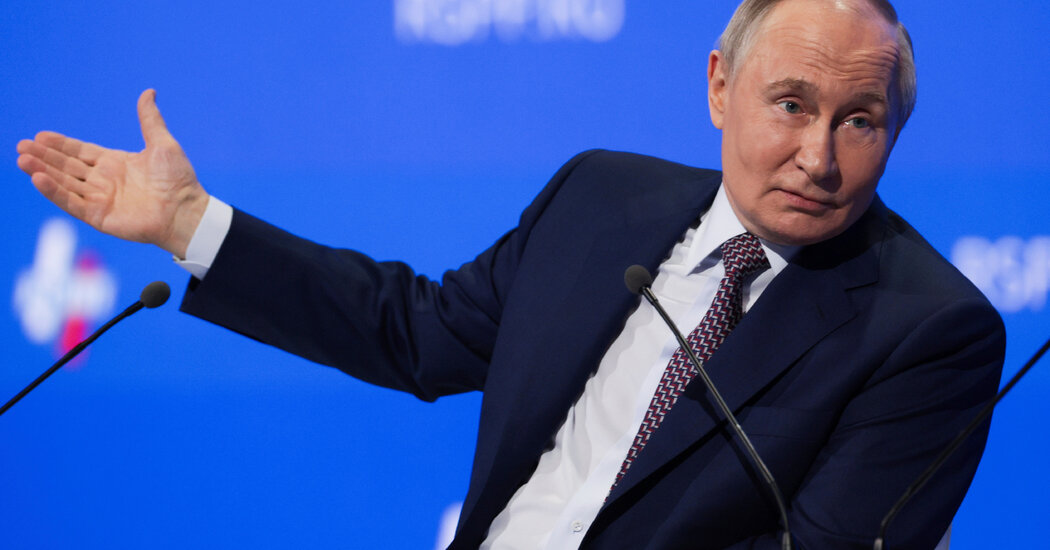News analysis
Although much of what Vladimir V. Putin agreed to during his call with President Trump was spun as a concession, the Russian leader stuck to the positions he has long held.
Reporting from Berlin
When the Kremlin released its summary of President Vladimir V. Putin’s call Tuesday with President Trump, one thing was unmistakable: The Russian leader hadn’t retreated from his maximalist aims in Ukraine and so far has conceded little.
Much of what Mr. Putin agreed to during the call — including a limited 30-day halt on energy infrastructure strikes by both sides, a prisoner exchange and talks about security in the Black Sea — was spun as a concession to Mr. Trump in the respective summaries of the conversation released by Moscow and Washington.
But all were goals that the Kremlin has pursued and has seen as advantageous in the past. Russia and Ukraine previously reached a tacit mutual agreement to refrain from energy infrastructure strikes, which have caused pain for both Moscow and Kyiv. Russia has long conducted prisoner exchanges with Ukraine, seeing the repatriation of its soldiers as a key Kremlin interest. And uninterrupted trading in the Black Sea is critical to Russia’s economy.
Mr. Putin’s demands on Ukraine appeared unchanged. During the call, according to the Kremlin, Mr. Putin reiterated requirements for a comprehensive 30-day cease-fire that he knows are nonstarters for Ukraine. According to the Kremlin, he claimed that the Ukrainians had sabotaged and violated agreements in the past, and accused Ukraine of committing “barbaric terrorist crimes” in the Kursk region of Russia.
Mr. Putin, the Kremlin said, also identified his “key condition” for settling the conflict more broadly: a complete cessation of outside military and intelligence support for Kyiv. Such an outcome, analysts say, would make Ukraine, a country far smaller than Russia, permanently hostage to Moscow’s overwhelming military superiority and forever stranded within the Kremlin’s orbit, without any counterbalancing backers.
We are having trouble retrieving the article content.
Please enable JavaScript in your browser settings.
Thank you for your patience while we verify access. If you are in Reader mode please exit and your Times account, or for all of The Times.
Thank you for your patience while we verify access.
Want all of The Times? .
Source: www.nytimes.com
